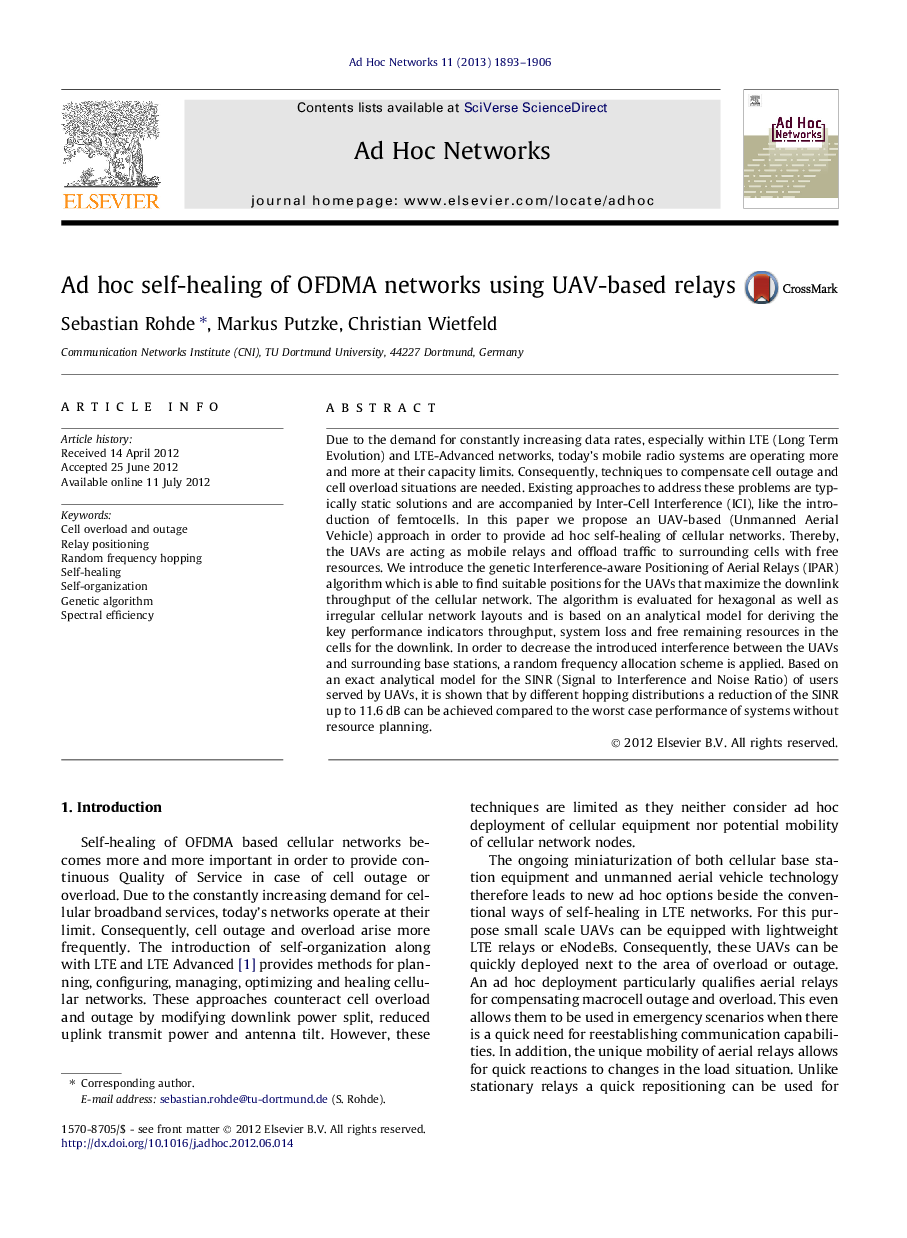| کد مقاله | کد نشریه | سال انتشار | مقاله انگلیسی | نسخه تمام متن |
|---|---|---|---|---|
| 448093 | 693531 | 2013 | 14 صفحه PDF | دانلود رایگان |

Due to the demand for constantly increasing data rates, especially within LTE (Long Term Evolution) and LTE-Advanced networks, today’s mobile radio systems are operating more and more at their capacity limits. Consequently, techniques to compensate cell outage and cell overload situations are needed. Existing approaches to address these problems are typically static solutions and are accompanied by Inter-Cell Interference (ICI), like the introduction of femtocells. In this paper we propose an UAV-based (Unmanned Aerial Vehicle) approach in order to provide ad hoc self-healing of cellular networks. Thereby, the UAVs are acting as mobile relays and offload traffic to surrounding cells with free resources. We introduce the genetic Interference-aware Positioning of Aerial Relays (IPAR) algorithm which is able to find suitable positions for the UAVs that maximize the downlink throughput of the cellular network. The algorithm is evaluated for hexagonal as well as irregular cellular network layouts and is based on an analytical model for deriving the key performance indicators throughput, system loss and free remaining resources in the cells for the downlink. In order to decrease the introduced interference between the UAVs and surrounding base stations, a random frequency allocation scheme is applied. Based on an exact analytical model for the SINR (Signal to Interference and Noise Ratio) of users served by UAVs, it is shown that by different hopping distributions a reduction of the SINR up to 11.6 dB can be achieved compared to the worst case performance of systems without resource planning.
Journal: Ad Hoc Networks - Volume 11, Issue 7, September 2013, Pages 1893–1906